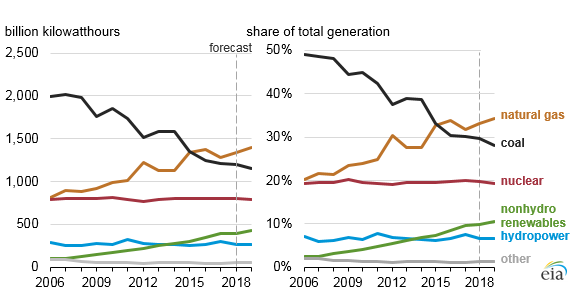For more than 10 years, natural-gas-fired power plants have been touted as “cleaner” electrical power generators, producing half the carbon dioxide (CO2), one-third of the nitrogen oxides (NOX), and negligible sulfur oxides (SOX) compared to coal-fired plants. In addition, the repealed U.S. Clean Power Plan had relied heavily on natural-gas plants for reducing greenhouse-gas emissions. A study reported in the journal Science (June 2018) has revealed that natural gas may not be such a clean alternative, after all, because oil and gas production and processing facilities are leaking 63 percent more methane than U.S. Environmental Protection Agency (EPA) estimates. Methane, the predominant component of natural gas, is a powerful greenhouse gas. Over a period of 20 years, it traps 86 times more heat in the atmosphere than carbon dioxide, according to the Intergovernmental Panel on Climate Change (IPCC). As a result, methane leaks in the United States may have caused about as much warming as CO2-emitting coal plants during the past 20 years. See also: Air pollution; Carbon dioxide; Electric power generation; Global climate change; Greenhouse effect; Methane; Natural gas; Power plant; U.S. Clean Power Plan

According to the researchers, methane emissions represent about 2.3 percent of U.S. natural-gas production and may still be underestimated. At the same time, they suggested that such high emissions need not be occurring. Mitigation through development of improved detection and repair systems as well more reliable process equipment could significantly reduce emissions.





